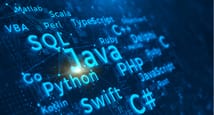- Introduction
The RedTeam Blueprint - A Unique Guide To Ethical Hacking
Master ethical hacking by joining the online The RedTeam Blueprint - A Unique Guide To Ethical Hacking course developed ...Read more
Online
₹ 599 3499
Quick Facts
| particular | details | |||
|---|---|---|---|---|
|
Medium of instructions
English
|
Mode of learning
Self study
|
Mode of Delivery
Video and Text Based
|
Course overview
The RedTeam Blueprint - A Unique Guide To Ethical Hacking Course is designed by Brandon Dennis, a Silicon Valley Hacker, to help the students enter the realm of ethical hacking and to get a glimpse of how the ethical hackers of Silicon Valley companies work. The curriculum will cover the whole range of aspects related to ethical hacking such as Windows operating system, Linux operating system, Kernel, data manipulation, networking and the like.
The RedTeam Blueprint - A Unique Guide To Ethical Hacking Online Course, by Udemy, demands from the prospective candidates to have the fundamental understanding of IT to get the full benefit of the course. The RedTeam Blueprint - A Unique Guide To Ethical Hacking Certification will facilitate the students to have the understanding of Programming, Passive & Active Reconnaissance, Custom Exploitation and much more and find a successful career opportunity in the field by giving a certificate of completion.
The highlights
- Online course
- Online resources
- English videos
- 30-Day Money-Back Guarantee
Program offerings
- 30.5 hours on-demand video
- 133 downloadable resources
- Full lifetime access
- Access on mobile and tv
- Certificate of completion
- English videos
Course and certificate fees
Fees information
certificate availability
Yes
certificate providing authority
Udemy
Who it is for
What you will learn
After the completion of The RedTeam Blueprint - A Unique Guide To Ethical Hacking Online Certification, the students will have the opportunity to study Kerberos, Linux Operating System Internals. Password Cracking, Breaking Jail Shells and a lot more.
The syllabus
Welcome! Who Is This Guy?!
The 3 Teams
- Module Overview - The 3 Teams
- The Red Team
- The Blue Team
- The Purple Team
Penetration Testing Process
- Module Overview - Penetration Testing Process
- Penetration Testing Methodology
- Metrics & Why They Are Important
- Routine Assessments Part 1 - What Are Routine Assessments?
- Routine Assessments Part 2 - Yearly Assessments
- Routine Assessments Part 3 - Quarterly Assessments?
- Routine Assessments Part 4- Monthly Assessments?
- Routine Assessments Part 5 - Constant Assessments?
- Routine Assessments Part 6 - Building an Assessment Plan
- Building & Working with an Enterprise Budget
- Specialties?!
- The CIA Triangle
The Windows Operating System
- Installing & Using VirtualBox for Lab Virtualization
- Windows at a Glance
- The Windows File System
- Windows Logs
- Windows Internals - UAC
- Windows Internals - Permissions
- Windows Internals - Alternate Data Streams
- Windows Internals - API Calls
- Windows Internals - The SID
- Windows Internals - Tokens
- Windows Internals - Named Pipes
- Windows Internals - PE Files & DLLs
- Windows Command Line - Accessing the Command Line
- Windows Command Line - Navigation
- Windows Command Line - Working with Files and Directories
- Windows Command Line - Working with Pipes
- Windows Command Line - Standard I/O/E
- Windows Command Line - Managing Windows
The Linux Operating System
- Where is the GUI?!
- The Linux File System
- Linux Command Line - Navigation
- Linux Command Line - Working with Files and Directories
- Linux Command Line - Standard I/O/E Recap
- Linux Command Line - Working with Data
- Linux Command Line - Working with File Permissions
- Linux Command Line - Man Pages
- Linux Command Line - Base64
- Linux Command Line - Hex
- Linux Command Line - Network Connections Recap
- Linux Processes
- What are INodes?
- Working with Open Files
- Symbolic Links
- The ID's
- Linux Pipes
- Linux Run Levels
- Linux Logs
Operating System Internals
- The Kernel
- One Ring to Rule Them All
- What is a CPU?
- The CPU Registers
- The CPU Flags
- What is Memory & How does it work?
- The Stack
- The Heap
- Extra information on Memory
- Debuggers
- Taking a look at ASLR
- A Quick Word About AntiVirus
Active Directory
- What is Active Directory
- Basic Windows Server Configuration
- Install AD DS
- The AD Tree
- OU's and their Permissions
- Managing Users and Groups
- Adding Machine to the Domain
- Setting up Group Policies
- Cached Credentials
Kerberos
- What is Kerberos?
- Kerberos Realms
- The Authentication Server
- The Ticket Granting Server
Data Manipulation
- What is Encryption
- Symmetric Encryption
- Asymmetric Encryption
- RSA Encryption
- AES Encryption
- What is Hashing?
- MD5 Hashing
- SHA Hashing
- What is Encoding?
- Base64 Encoding
- Hex Encoding
- URL Encoding
- What is Compression?
- Lossless vs Lossy Compression
- LZ77 & LZ78 Compression Algorithms
- Data Manipulation - Hands On
Networking
- What is Networking?
- The OSI Model
- TCP/IP
- UDP
- The Switch
- Routers & Gateways
- What is a Protocol?
- ICMP
- DNS
- DHCP
- ARP
- What is an IDS
- What is an IPS
- What is HA?
- Proxys
- The DMZ
- Quick Talk on Databases
VPNs
- What is a VPN
- What is IPSEC?
- What is IKE?
Firewalls
- What is a Firewall?
- Packet Filtering Firewalls
- Stateful Inspecting Firewalls
- Web Application Firewalls
Configuring PFSense Firewalls
- Installing PFSense
- The Firewall UI
- Configuring a DMZ
- Configuring a VPN
- Backup & Logging
- PFsense Hands On
Program Theory
- What is a Compiler?
- What is a Linker?
Python Course
- Why Python?
- Installing Python
- Hello World
- Variables
- Type Casting
- Operators
- If/Else
- Loops
- The Dictionary
- Lists
- Tuples
- Modules
- Classes
- Inheritance
- Configuration Files
- Logging
- Error Handling
- Sockets
- Threading
- Python Hands On
Assembly Course
- Why Assembly?
- Hello World
- Variables
- Saving States
- Arithmetic
- Loops
- Logic Control
- Reading Files
- Writing Files
- Op Code
- Bit Operators
- Assembly Hands On
Scope Identification
- Goal & Scope Identification
- Stability Considerations
- Briefing Stake Holders
- Prepping
- Scope Identification Hands On
Reconnaissance
- What is Reconnaissance?
- Installing Kali
- Passive Recon - Google
- Passive Recon - Shodan
- Passive Recon - Whois
- Passive Recon - Netcraft
- Passive Recon - Job Posting
- Active Recon - Port Scanning
- Active Recon - DNS
- Active Recon - Nikto
- Active Recon - Dirb
- Active Recon - Sparta
- Active Recon - Working with NC
- Active Recon - Banner Grabbing
- Active Recon - Vulnerability Scanners
- Active Recon - Browsing
- Active Recon - Manual vs Automated
- Reconnaissance Hands On
Exploitation
- Finding Exploits
- Misconfigurations
- Looking for 0 days
- Metasploit - What is Metasploit?
- Metasploit - Exploits and Payloads
- Metasploit - The Meterpreter
- Metasploit - Adding an Exploit to Metasploit
- Metasploit - MSFVenom
- Metasploit - Hands On
- The OWASP Top 10
- SQL Injection & SQLMap
- XSS
- Insecure Direct Object Reference
- Local File Inclusion
- Remote File Inclusion
- The Authenticated Unauthenticated Pages
- Broken Authentication and Session Management
- Faulty Redirects
Post Exploitation
- Stabilizing Shells
- Breaking Out Of The Jail Shell
- What is Persistence?
- Windows Persistence
- Linux Persistence
- What is Privilege Escalation?
- OS Version
- Common Configuration Issues
- File Permissions
- MySQL
- Sudo
- Relative Path Sudo Binary
- Unquoted Service Path
- Service Misconfigurations
- LinuxPrivChecker
- Im Root Now What?
- Pulling Hashes
- Pass The Hash
- SSH Keys
- Checking Logs
- Duel Homed Machines
- Network Traffic
- ARP Poisoning
- Web Servers
- Account Directory Attacks
- Password Spraying
- SSH Tunneling
- Pivoting
Password Cracking
- What is Password Cracking?
- John The Ripper
- Hashcat
- Rainbow Tables
- Password Cracking Hands On
Covering Your Tracks
- Why Cover Your Tracks?
- Clearing Windows Logs
- Clearing Linux Logs
- Quick Talk on Logging
- Clearing Command History
- Persistent Backdoors
- The Clean Up
- Covering Your Tracks Hands On
Reporting
- The Format
- The Audience
- Business Risks on Findings
- Remediation Options
- Working With The Blue Team
Attacking Active Directory (Realistic Scenario)
- Reconnaissance
- Exploitation
- Post Exploitation
- Finding New Access
- Moving Up In The World!
- Getting Domain Admin
Job Hunting
- The Resume
- Professional Email
- Certifications
- Personal Brand
- Searching for the Job
- Analyzing the Job Post
- Applying for the Job
- The Future Company
- Salary Requirements
- The Interview Process - The Screening Call
- The Interview Process - Prepping for the Technical Interviews
- The Interview Process - The Technical Screening Interview
- The Interview Process - Prepping for the On Site Final Interview
- The Interview Process - The Onsite
- The Interview Process - The Offer
- Congratulations!


 Brochure
Brochure Enquire
Enquire











